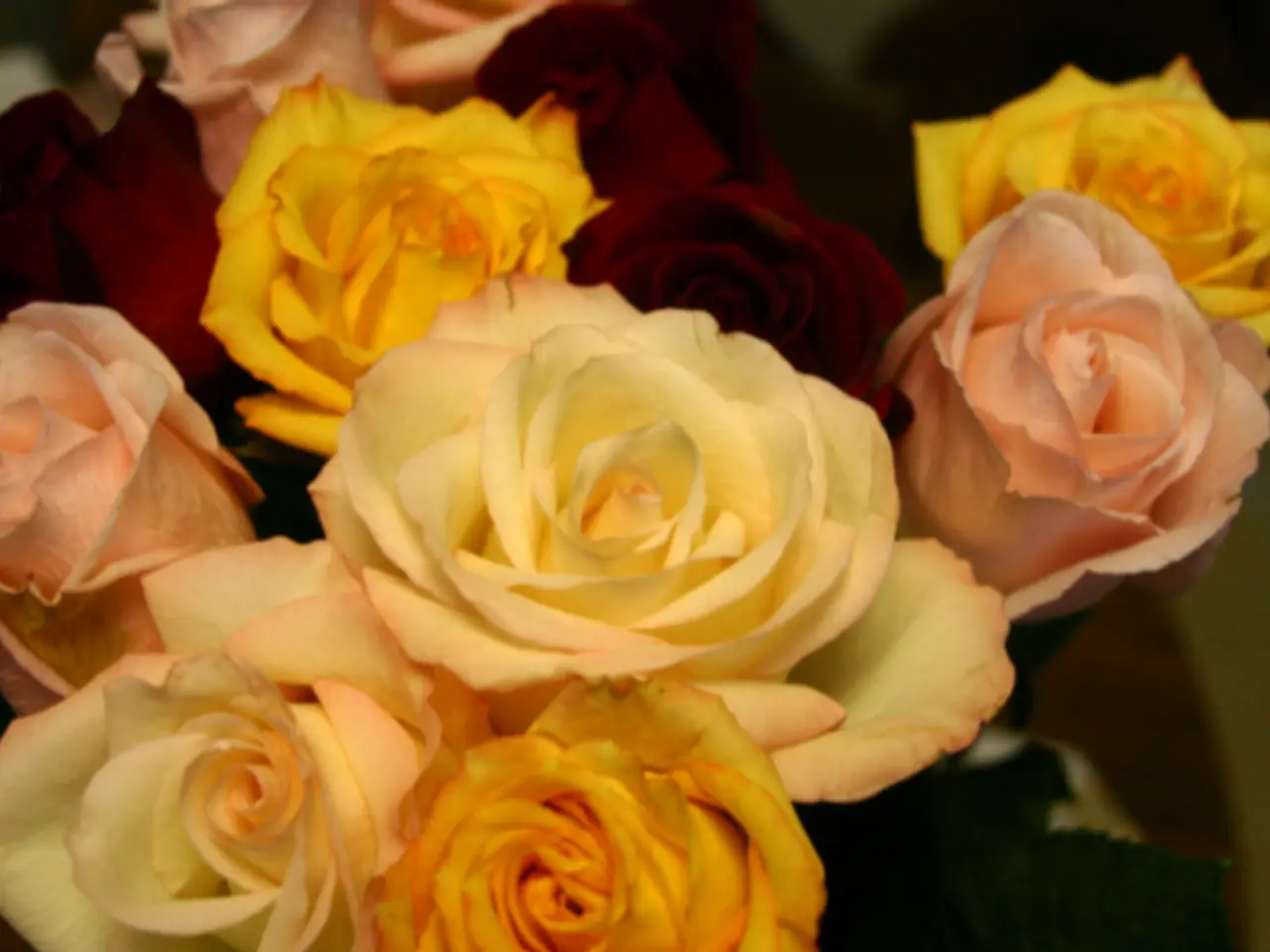Guide for Perfect Rose Pruning: Timing and Techniques for Striking Blossoms
In the world of gardening, roses are a beloved bloom, and their care requires a gentle touch, especially when it comes to pruning. Whether you're tending to shrub roses, climbing roses, or weeping standard roses, the principles of pruning remain the same, albeit with slight variations.
For once-flowering varieties, it's essential to prune one in three of the main stems, and prune the flowered sideshoots on all the stems to two or three buds away from the main framework. On the other hand, repeat-flowering rose climbers tend not to be vigorous roses and need little pruning other than deadheading.
The best time to prune roses is any time between autumn and early spring. Pruning in autumn prepares the plants for winter, creating a plant that is open in the middle. Shrub roses are pruned by cutting out old, woody stems at the base, while weeping standard roses require the removal of new shoots growing at odd angles to retain the 'weeping' appearance.
When pruning roses, it's crucial to wear thick gloves and use sharp secateurs or loppers. Dead or diseased rose stems, damaged or withered stems should be cut back to a healthy green shoot. When cutting through a rose stem, it should be clean and white. If it is black or has a dark center, cut again further down the stem.
Hand pruning is the recommended method for roses because it enables careful removal of specific parts with minimal damage, preserving plant health and encouraging better flowering. Using a hedge trimmer can be quicker but may harm the rose’s growth and overall vitality by causing unnecessary large wounds and loss of flower buds.
Hand pruning is typically done by snipping off about one-third of the rose bush’s size, removing dead or woody stems cleanly with straight cuts rather than angled ones to minimize wound exposure. In contrast, hedge trimmers are designed for shaping hedges uniformly but often create rough, larger cuts unsuitable for delicate rose stems.
In spring, prune the top stems of shrub roses to a new rose bud that is growing away from the center of the plant, using sharp secateurs and cutting just above the bud at an angle of about 45°, with the blade sloping away from it. Climbing roses produce new stems from everywhere along their existing ones, and it's essential to train the stems of climbing roses horizontally to produce a good display of flowers.
Roses need deadheading regularly in summer to encourage more blooms. The root system of roses is not as extensive as most other shrubs, and plants are susceptible to 'wind rock'. To remove suckers, follow the rose stem down to the point it grows from, clearing away the soil if necessary, and pull it away. If you cut it down rather than pull it off, you will only encourage more shoots.
In conclusion, hand pruning is the key to maintaining healthy, attractive, and long-lived roses. By following these guidelines, gardeners can ensure their roses flourish, providing a beautiful display year after year.
[1] Source: Rose Pruning Trial Results, University of Wisconsin-Madison Extension [3] Source: The Benefits of Hand Pruning Roses, The Spruce, 2021.
- Gardening enthusiasts often take pride in their home-and-garden, particularly when they successfully tend to plants like roses, which require a meticulous touch and careful pruning.
- In spaces large or small, roses thrive within landscapes and gardens, their flowers adding a touch of beauty to various gardening styles.
- To keep roses blooming and healthy, gardening techniques such as hand pruning become essential, preserving the plant's vitality and promoting better flowering.
- The delicate nature of rose stems makes hand pruning the recommended method, allowing for precise removal of unwanted growth, while minimizing damage to the plant.




